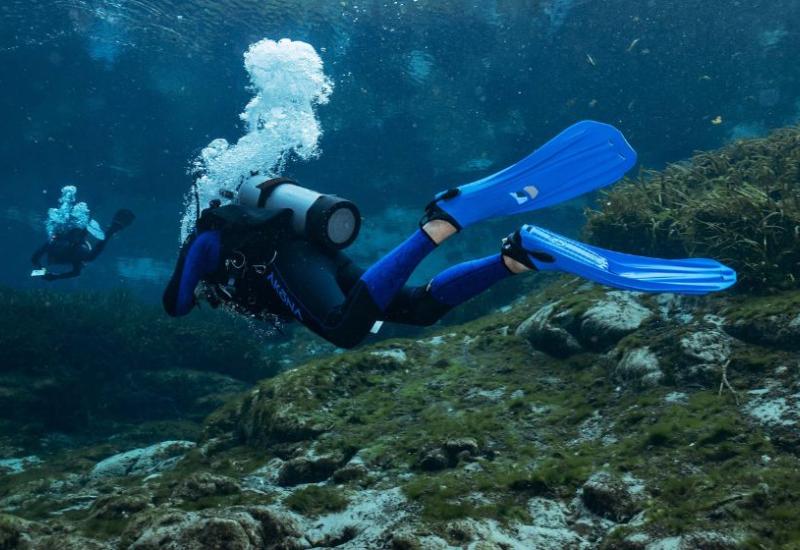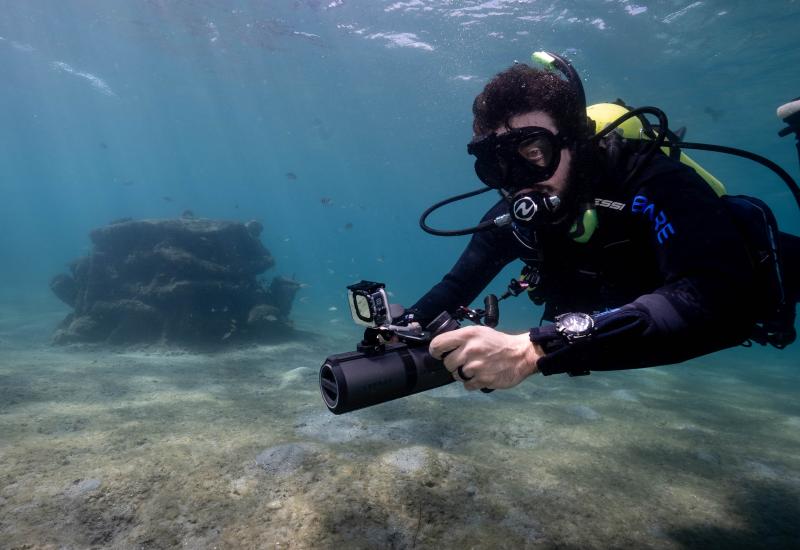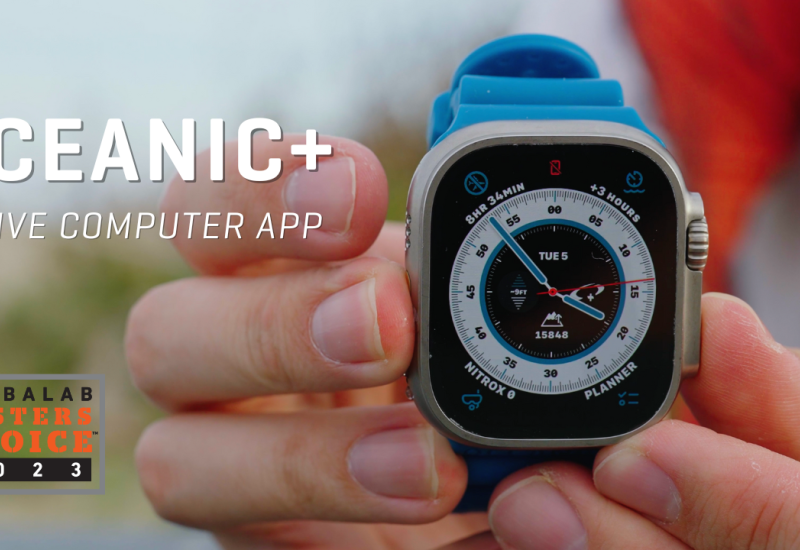ScubaLab: Dive Computers

By John Brumm
| September/October 2010 Issue Scuba Lab Review Quick Links |
|---|
| Basic Computers |
| --- |
| We define basic dive computers as single-gas units, nitrox capable to 50 percent. Computers in this category are good for recreational diving, plus they can function as backup computers or simple bottom timers for deep or technical diving. They range from no-frills, budget models to full-featured DCs with air integration. None of these DCs come with onboard compasses, although many come packaged in consoles that include traditional modular compasses. |
| Genesis React Pro| Oceanic ProPlus 2.1 |
| Sherwood Profile| Sherwood Insight |
| SUBGEAR XP10| SUUNTO D4 |
| SUUNTO Zoop| |
| Advanced Computers |
| --- |
| These are full-featured dive computers designed for divers who want the option of ratcheting up their diving experiences. Advanced computers allow you to program multiple mixes up to 100 percent oxygen that can be switched while at depth. They often also offer features like onboard compasses. |
| Atomic Aquatics Cobalt| Mares Icon HD |
| Oceanic Geo 2.0| |
Each year, designers of dive computers make quantum leaps forward in the features and functions of their newest data crunchers. This year is no different. Mixed in with 2010’s crop are a couple of new models that will simply blow your mind. Jam-packed with innovative dive functions, their state-of-the-art operating systems have redefined the term “user-friendly,” and a myriad of cool features are sure to make any diver’s eyes bug out. Add these cutting-edge DCs to the more tried-and-true models unveiled this year, and it no longer becomes a matter of what computer will do the job; rather, it’s more a matter of finding the model that will best fit your individual diving style.
Test Team
These days, shopping for a dive computer is not unlike shopping for a car. Pretty much any make and model will get you where you want to go. It’s how it gets you there — fast and flashy or slow and steady; how you’re going to use it — daily commuting or long-range road tripping; and, of course, your price.
Also be sure to check out our expanded data charts for Ergonomic Performance and PC Kit Performance
The same criteria can be used with dive computers. They all do a great job of computing depth, time and nitrogen loading. Beyond that, it’s all about features, functions and preferences. Divers are different, with a variety of tastes and priorities. Liberal or conservative algorithms, air integration, big screens, onboard compasses, programmable safety factors, multiple gas mixes — it’s all there for the taking, it just depends on how much of it you want.
For this year’s DC review, ScubaLab rounded up 10 new or redesigned dive computers and divided them into two categories: Basic — good for recreational diving; and Advanced — capable of going above and beyond. ScubaLab staff checked each computer to ensure it was functioning correctly, and then pored over spec sheets, owner’s manuals and websites to get all the facts. Then the test team took them all into the water to see how they behaved in real-world conditions.
Divers scored each computer in eight different categories, and made notes on such performance criteria as ease of reading and understanding the primary and alternate screens, the effectiveness of NDL bar graphs and ascent rate warnings, and how well the backlights worked. Between dives, they checked to see how each computer displayed surface-interval time and how easy it was to access logbook information. Finally, computers and their PC Interface Kits were turned over to our resident IT expert, who evaluated how efficiently each computer allowed you to transfer dive data over to a personal computer.
The differences between these dive computers can be found in the details.
For example:
Air Integration — Only two of this year’s DCs are air-integrated (although Mares has talked about offering this feature on its Icon HD). Air-integrated computers display psi data on their screens along with desaturation data. There are two types of air-integrated DCs: One connects the computer to the air supply via a standard high-pressure hose; the other uses a “wireless” system that replaces the HP hose with a transmitter that screws into the first stage, and sends psi data via radio signals to the display unit mounted on your wrist. Both get the job done; the one you choose comes down to personal preference.
Nitrox & Multiple Gas Mixes — While all DCs in this year’s group are capable of programming nitrox from 21 percent to 50 percent oxygen, the more advanced DCs can program mixes up to 100 percent oxygen. The ability to program two or even three gas mixes that can be switched while at depth is another function that differentiates the basic DCs from the more advanced models.
Algorithms — Conservative algorithms increase your safety margin by limiting the amount of time you can spend at depth without putting the computer into deco mode. Liberal algorithms allow for much more bottom time, but doing so can increase your risk of decompression sickness. Most computers’ algorithms fit neatly into either the liberal or conservative category, while a few are more middle-of-the-road.
Programmable Safety Levels — Just over half this year’s DCs offer the ability to program in additional levels of conservatism to create a larger safety cushion. Computers that don’t have this ability do provide an alternative method for building in safety cushions — namely, by visually backing off on the NDL pixels on the bar graphs.
Batteries — While most of this year’s DCs operate on user-replaceable, 3-volt lithium batteries, Atomic Aquatics’ and Mares’ cutting-edge models have moved to rechargeable lithium-ion batteries that enable them to power their four-color screens and superbright lighting systems.
Data Displays — How a computer presents its diving information can make a big difference in how well you and your DC get along. Some computers display the most critical data (like NDLs and depth) with the largest digits, followed by the less critical data (like temperature and time) with smaller digits. Other computers use similar-size digits for all data, and on others there seems to be no correlation between the importance of data and the size of digits.
Owner’s Manuals — As dive computers get more complex, owner’s manuals become more and more important. Many of this year’s DCs offer 3- or 5-inch CD versions of their owner’s manuals. The downside is that not all PCs can accommodate 3-inch-format CDs. Fortunately, most owner’s manuals are also available for download on manufacturer websites.
User Controls — Depending on the computer, there are from one to four buttons with which to access data, program preferences or switch screens. In most cases, the more buttons a computer has, the easier it is to access screens or set parameters.
Be sure to check out our expanded data charts for Ergonomic Performance and PC Kit Performance
| September/October 2010 Issue Scuba Lab Review Quick Links |
|---|
| Basic Computers |
| --- |
| We define basic dive computers as single-gas units, nitrox capable to 50 percent. Computers in this category are good for recreational diving, plus they can function as backup computers or simple bottom timers for deep or technical diving. They range from no-frills, budget models to full-featured DCs with air integration. None of these DCs come with onboard compasses, although many come packaged in consoles that include traditional modular compasses. |
| Genesis React Pro| Oceanic ProPlus 2.1 |
| Sherwood Profile| Sherwood Insight |
| SUBGEAR XP10| SUUNTO D4 |
| SUUNTO Zoop| |
| Advanced Computers |
| --- |
| These are full-featured dive computers designed for divers who want the option of ratcheting up their diving experiences. Advanced computers allow you to program multiple mixes up to 100 percent oxygen that can be switched while at depth. They often also offer features like onboard compasses. |
| Atomic Aquatics Cobalt| Mares Icon HD |
| Oceanic Geo 2.0| |
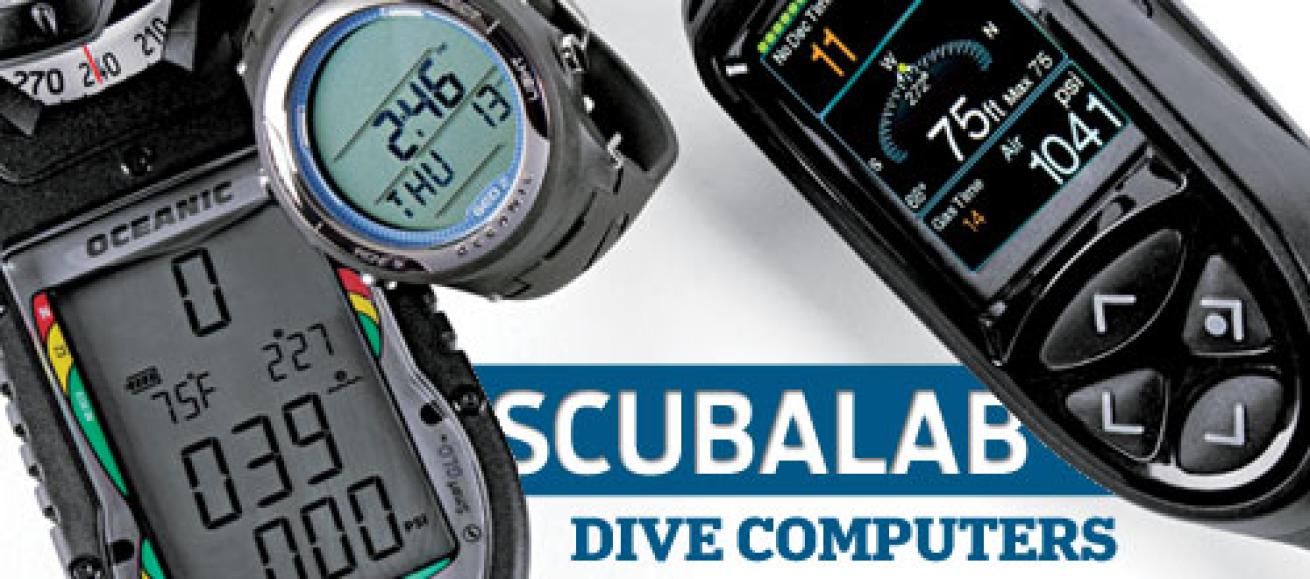
By John Brumm
|September/October 2010 Issue Scuba Lab Review Quick Links| |---| |Basic Computers| |---| |We define basic dive computers as single-gas units, nitrox capable to 50 percent. Computers in this category are good for recreational diving, plus they can function as backup computers or simple bottom timers for deep or technical diving. They range from no-frills, budget models to full-featured DCs with air integration. None of these DCs come with onboard compasses, although many come packaged in consoles that include traditional modular compasses.| |Genesis React Pro| Oceanic ProPlus 2.1| |Sherwood Profile| Sherwood Insight| |SUBGEAR XP10| SUUNTO D4| |SUUNTO Zoop| | |Advanced Computers| |---| |These are full-featured dive computers designed for divers who want the option of ratcheting up their diving experiences. Advanced computers allow you to program multiple mixes up to 100 percent oxygen that can be switched while at depth. They often also offer features like onboard compasses.| |Atomic Aquatics Cobalt| Mares Icon HD| |Oceanic Geo 2.0| |Each year, designers of dive computers make quantum leaps forward in the features and functions of their newest data crunchers. This year is no different. Mixed in with 2010’s crop are a couple of new models that will simply blow your mind. Jam-packed with innovative dive functions, their state-of-the-art operating systems have redefined the term “user-friendly,” and a myriad of cool features are sure to make any diver’s eyes bug out. Add these cutting-edge DCs to the more tried-and-true models unveiled this year, and it no longer becomes a matter of what computer will do the job; rather, it’s more a matter of finding the model that will best fit your individual diving style.
Test Team
These days, shopping for a dive computer is not unlike shopping for a car. Pretty much any make and model will get you where you want to go. It’s how it gets you there — fast and flashy or slow and steady; how you’re going to use it — daily commuting or long-range road tripping; and, of course, your price.
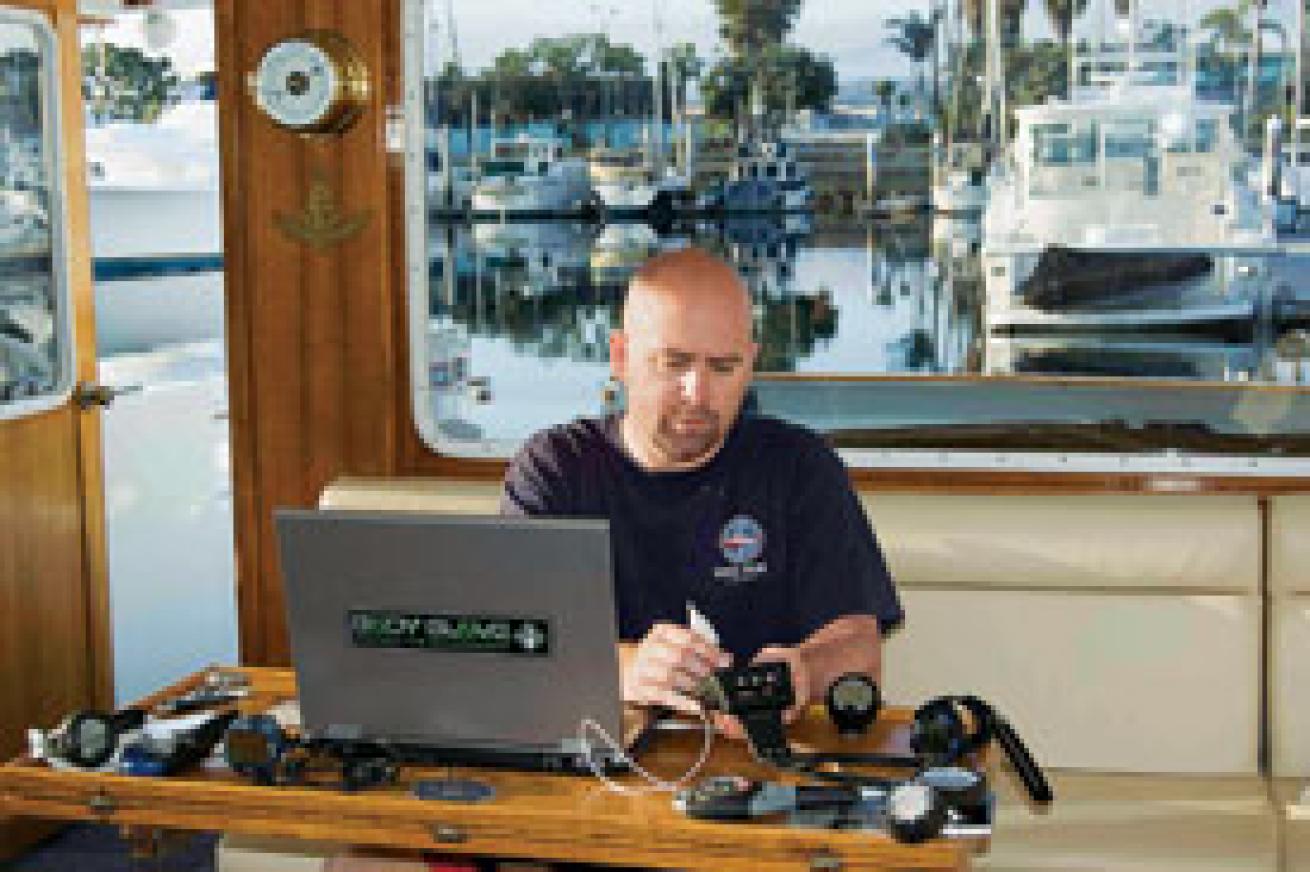
Also be sure to check out our expanded data charts for Ergonomic Performance and PC Kit Performance
The same criteria can be used with dive computers. They all do a great job of computing depth, time and nitrogen loading. Beyond that, it’s all about features, functions and preferences. Divers are different, with a variety of tastes and priorities. Liberal or conservative algorithms, air integration, big screens, onboard compasses, programmable safety factors, multiple gas mixes — it’s all there for the taking, it just depends on how much of it you want.
For this year’s DC review, ScubaLab rounded up 10 new or redesigned dive computers and divided them into two categories: Basic — good for recreational diving; and Advanced — capable of going above and beyond. ScubaLab staff checked each computer to ensure it was functioning correctly, and then pored over spec sheets, owner’s manuals and websites to get all the facts. Then the test team took them all into the water to see how they behaved in real-world conditions.
Divers scored each computer in eight different categories, and made notes on such performance criteria as ease of reading and understanding the primary and alternate screens, the effectiveness of NDL bar graphs and ascent rate warnings, and how well the backlights worked. Between dives, they checked to see how each computer displayed surface-interval time and how easy it was to access logbook information. Finally, computers and their PC Interface Kits were turned over to our resident IT expert, who evaluated how efficiently each computer allowed you to transfer dive data over to a personal computer.
The differences between these dive computers can be found in the details.
For example:
Air Integration — Only two of this year’s DCs are air-integrated (although Mares has talked about offering this feature on its Icon HD). Air-integrated computers display psi data on their screens along with desaturation data. There are two types of air-integrated DCs: One connects the computer to the air supply via a standard high-pressure hose; the other uses a “wireless” system that replaces the HP hose with a transmitter that screws into the first stage, and sends psi data via radio signals to the display unit mounted on your wrist. Both get the job done; the one you choose comes down to personal preference.
Nitrox & Multiple Gas Mixes — While all DCs in this year’s group are capable of programming nitrox from 21 percent to 50 percent oxygen, the more advanced DCs can program mixes up to 100 percent oxygen. The ability to program two or even three gas mixes that can be switched while at depth is another function that differentiates the basic DCs from the more advanced models.
Algorithms — Conservative algorithms increase your safety margin by limiting the amount of time you can spend at depth without putting the computer into deco mode. Liberal algorithms allow for much more bottom time, but doing so can increase your risk of decompression sickness. Most computers’ algorithms fit neatly into either the liberal or conservative category, while a few are more middle-of-the-road.
Programmable Safety Levels — Just over half this year’s DCs offer the ability to program in additional levels of conservatism to create a larger safety cushion. Computers that don’t have this ability do provide an alternative method for building in safety cushions — namely, by visually backing off on the NDL pixels on the bar graphs.
Batteries — While most of this year’s DCs operate on user-replaceable, 3-volt lithium batteries, Atomic Aquatics’ and Mares’ cutting-edge models have moved to rechargeable lithium-ion batteries that enable them to power their four-color screens and superbright lighting systems.
Data Displays — How a computer presents its diving information can make a big difference in how well you and your DC get along. Some computers display the most critical data (like NDLs and depth) with the largest digits, followed by the less critical data (like temperature and time) with smaller digits. Other computers use similar-size digits for all data, and on others there seems to be no correlation between the importance of data and the size of digits.
Owner’s Manuals — As dive computers get more complex, owner’s manuals become more and more important. Many of this year’s DCs offer 3- or 5-inch CD versions of their owner’s manuals. The downside is that not all PCs can accommodate 3-inch-format CDs. Fortunately, most owner’s manuals are also available for download on manufacturer websites.
User Controls — Depending on the computer, there are from one to four buttons with which to access data, program preferences or switch screens. In most cases, the more buttons a computer has, the easier it is to access screens or set parameters.
Be sure to check out our expanded data charts for Ergonomic Performance and PC Kit Performance
|September/October 2010 Issue Scuba Lab Review Quick Links| |---| |Basic Computers| |---| |We define basic dive computers as single-gas units, nitrox capable to 50 percent. Computers in this category are good for recreational diving, plus they can function as backup computers or simple bottom timers for deep or technical diving. They range from no-frills, budget models to full-featured DCs with air integration. None of these DCs come with onboard compasses, although many come packaged in consoles that include traditional modular compasses.| |Genesis React Pro| Oceanic ProPlus 2.1| |Sherwood Profile| Sherwood Insight| |SUBGEAR XP10| SUUNTO D4| |SUUNTO Zoop| | |Advanced Computers| |---| |These are full-featured dive computers designed for divers who want the option of ratcheting up their diving experiences. Advanced computers allow you to program multiple mixes up to 100 percent oxygen that can be switched while at depth. They often also offer features like onboard compasses.| |Atomic Aquatics Cobalt| Mares Icon HD| |Oceanic Geo 2.0| |

